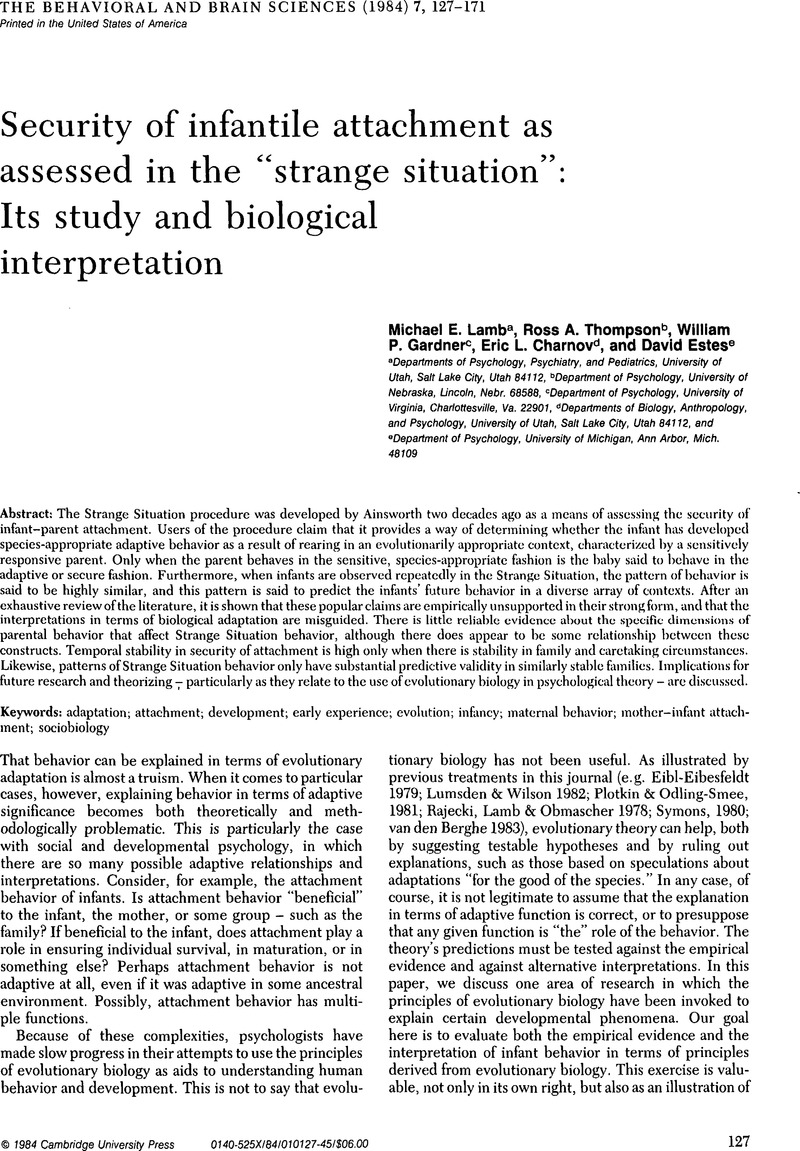Miyake, K.,
Chen, S-J.,
Ujüe, T.,
Tajima, N.,
Satoh, K. &
Takahashi, K. (
1981–
1982) Infant's temperamental disposition, mother's mode of interaction, quality of attachment, and infant's receptivity to socialization-interim progress report (1981–82). Research and Clinical Center of Child Development, annual report. Faculty of Education, Hokkaido University, Sapporo, Japan. [rMEL]
Google Scholar 